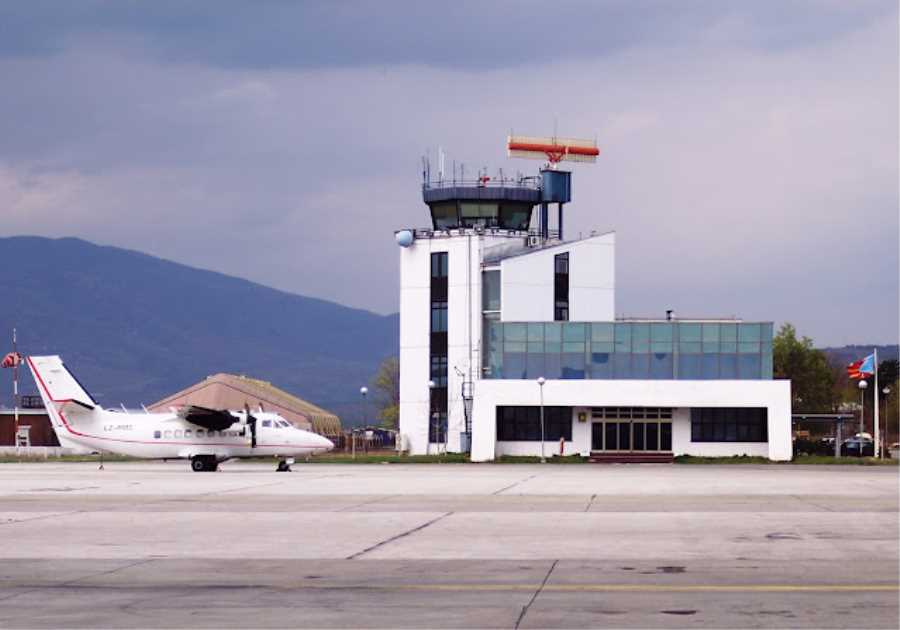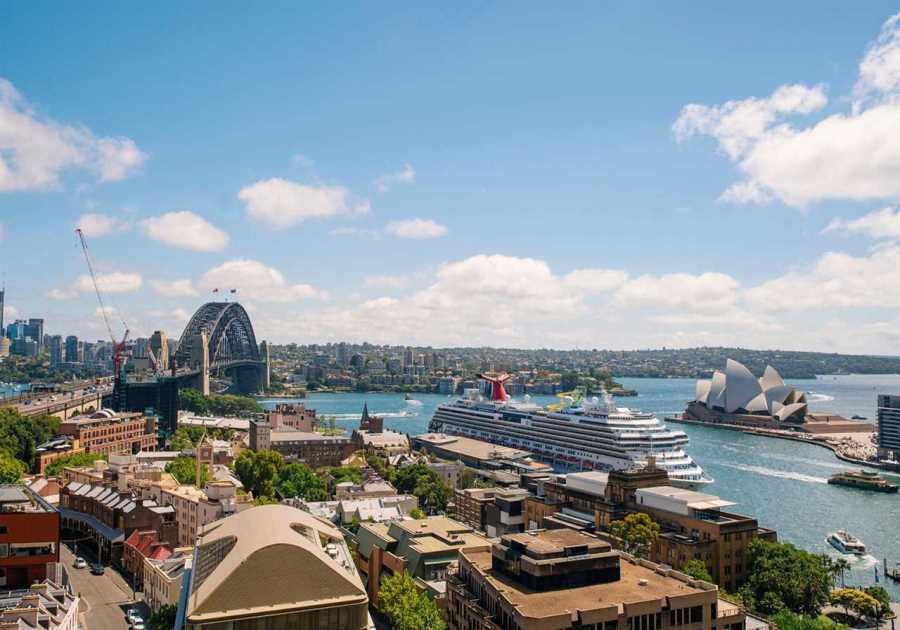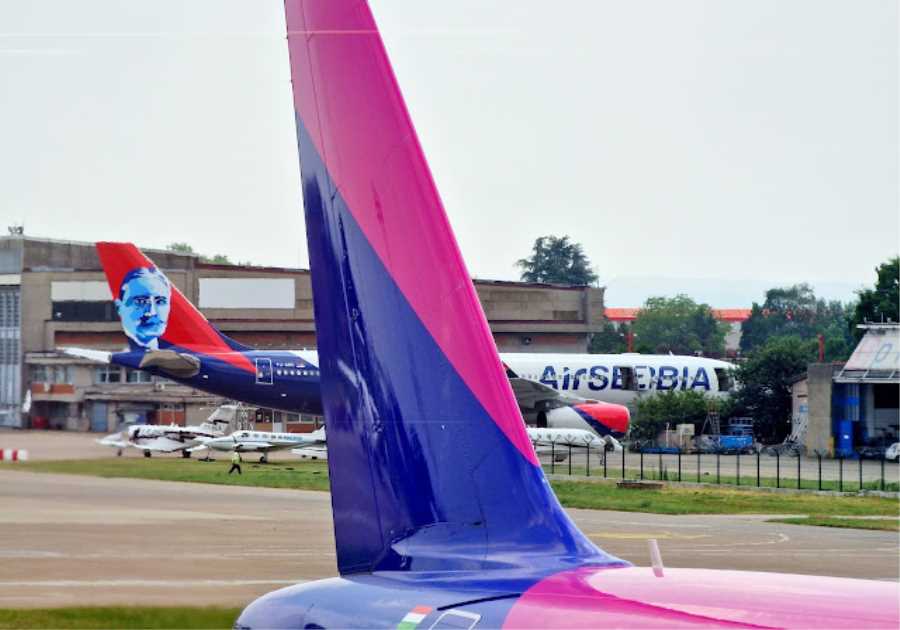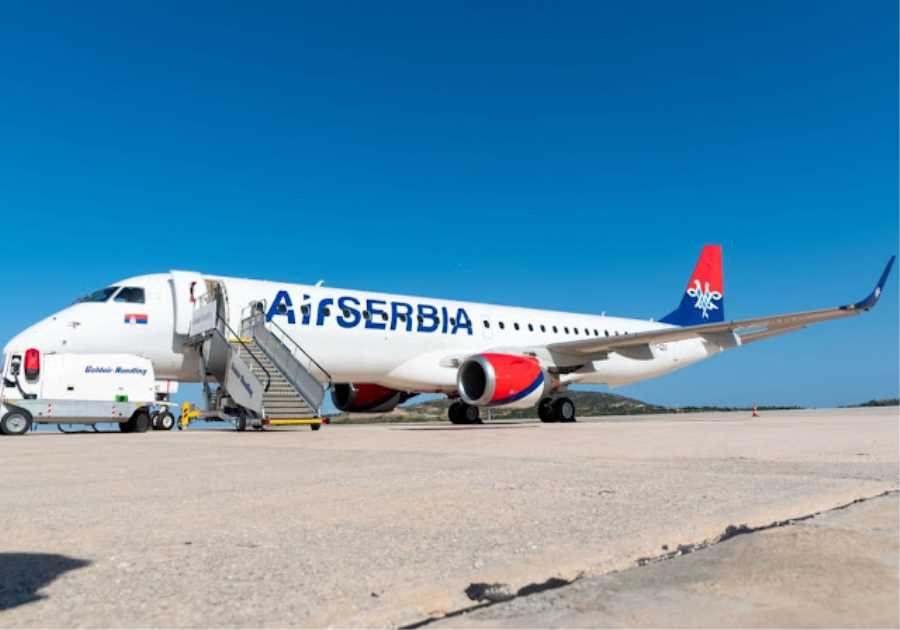TODAY'S READ
HOSTED BY: https://1airtravel.com
Written by jsg The Skopje weekend starts on Friday morning. No work today as I took a day off work, so I can enjoy a 4-day-long weekend, which also includes the next Monday – a bank holiday. Although still in Warsaw, I am already set on Skopje time. Yugoslav summer part 2 - Skopje I visited Skopje in 2017 for the first time, when the official name of the country was FYROM - Former Yugoslav Republic of Macedonia. Back then, Adria Airways was still alive, I flew with the carrier from Munich to Skopje and vice versa via Ljubljana. Later, I planned to re-visit Skopje in 2020, but due to COVID-19 pandemic, my flight was cancelled. I booked a new flight for early April 2022 but due to the overhaul of the runway at Skopje airport, all flights were diverted to Ohrid airport. As I was not keen on travelling to Ohrid, I rebooked my flight for August 2022, when I could finally to re-visit the capital of North Macedonia.
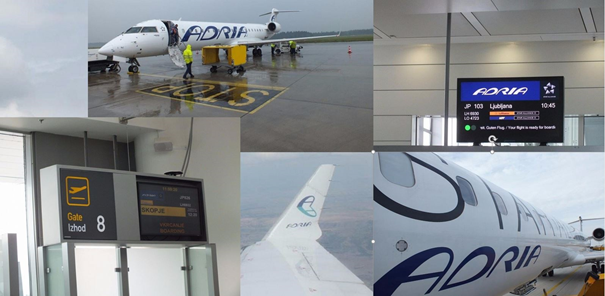
LO593: Warsaw - Skopje Today is a working day, so I can take bus#317, which stops almost at my front door. After 4 stops, I get off at the crossroads of two avenues: Komitetu Obrony Robotnków and Żwirki and Wigury. The latter one links the Warsaw city centre with Frederic Chopin Airport. Then I take another bus #175 and, after 2 stops, I get off at the departure terminal. The door-to-door journey takes me approximately 25 minutes.
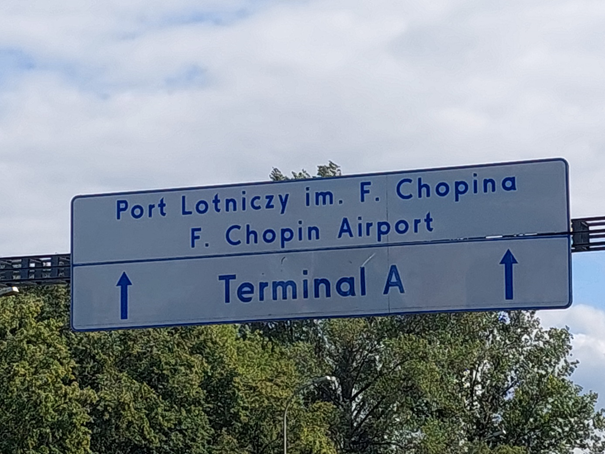
Check-in, security, and passport control take less than 20 minutes, and I proceed to my assigned gate, 13N. Later on, the gate is changed to 8N. According to the display screens, boarding should commence at 14:05. A few minutes after this time, the gate agents announce the start of boarding. Boarding via the airbridge goes by smoothly. Today’s "jetset" is inclusive of Macedonians returning to Skopje from Canada (I saw some tags with the Canadian flag attached to the bags at the baggage reclaim area) and Polish tourists travelling for holiday.
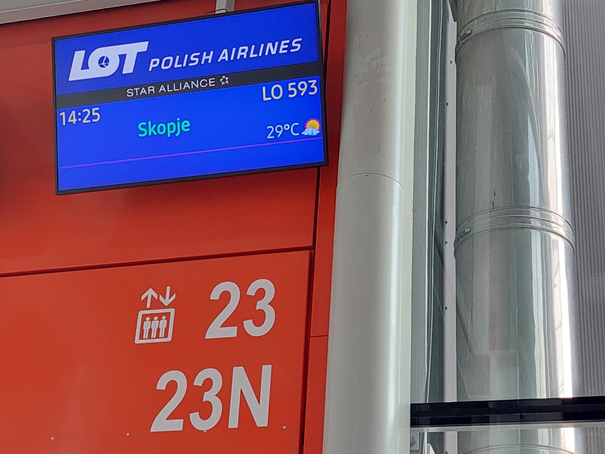
Flight LO593 is operated by the 11.2-year old aircraft Embraer 195 LR with the registration number SP-LNB painted in "Grześki" special colours since June 2019. The machine already completed 2 segments: Warsaw - Paris CDG, Paris CDG - Warsaw and the flight to Skopje is the third one. Inside the aircraft, I take my assigned seat - 8A and to my luck, the next seat is free. There is one person in business class and in front of me is a nuclear Polish family heading for their holidays.
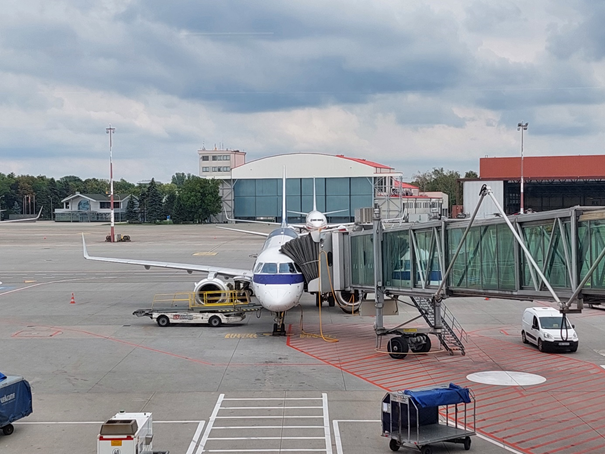
At 14:29 boarding is completed, and the aircraft doors are closed. 4 minutes later, push-back procedures commence in parallel with the safety demo presented by the cabin crew (2 females and 1 male) in Polish and in English. Taxi to runway 33 takes 7 minutes. During taxing, we pass the VIP terminal with 3 parked government aircraft and later a remote parking stand, where a mixture of LOT, Enter Air and Wizz aircraft are kept. At 14:40 we take off, leaving partially cloudy Warsaw behind.
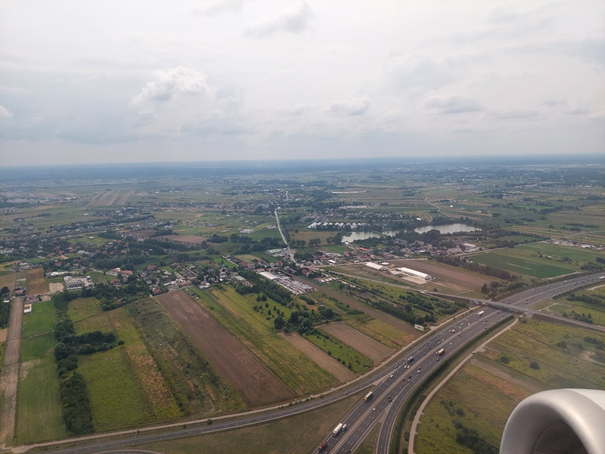
The beginning of the flight is quite bumpy due to turbulence, but then all settles down and the reminder of the flight is smooth and quiet. For the majority of the flight, clouds obscure the view, so I cannot guess the flight path. At some point, the clouds disperse, and I can see a meandering river. Maybe it is Sava or Danube - I contemplate. Later I check on flight24.com, is it was Danube between Romania and Bulgaria.
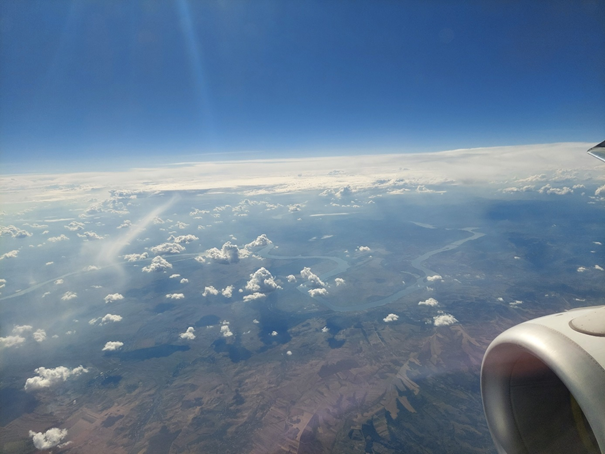
The in-flight service includes a savoury or sweet bun, a glass of still or sparkling water, and a cup of tea or coffee. In addition, passengers can also purchase items from the buy-on-board menu. I chose a complimentary blueberry bun, a glass of sparkling water and a cup of tea with lemon. Attentive readers of my previous reports have probably noted, that an apple bun has now been replaced by a blueberry one. I noted this change during my flight to Stockholm in mid-July, and I even enquired with a cabin crew member about this change. I was told that a variety of sweet snacks will now change every 2 months. I was also informed that the blueberry bun has been offered since the beginning of July, and the savoury (spinach) bun remains unchanged. Apart from enjoying in-flight service, during the flight, I study a tourist guide to see what else I can see in Skopje.
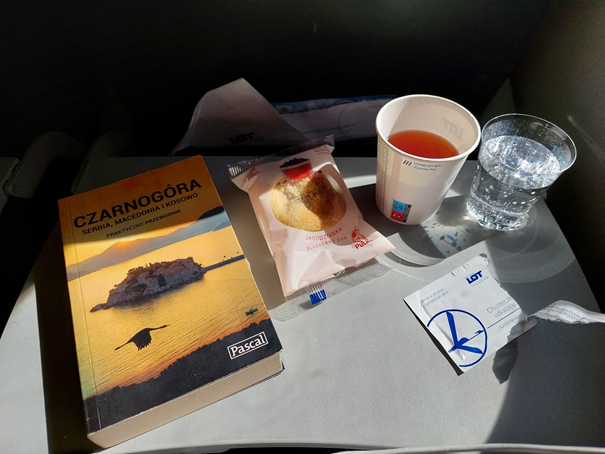
Today’s flight path crosses over Krakow, west of the Slovak city of Kosice, then over Hungarian cities: Miskolc and Debrecen, Romanian Oradea, and the Bulgarian town of Lom, entering North Macedonian airspace around the village of Sasa.
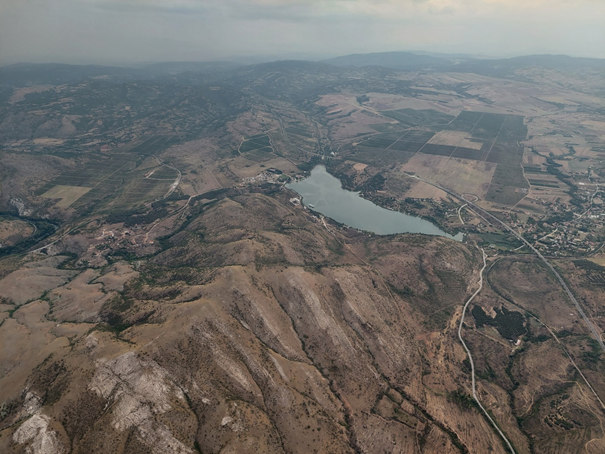
At 16:11, the seat belt sign is turned on and the cabin crew announce preparation for landing, then the aircraft makes a U-turn over Bashino Selo and the nearby lake of Mladost. After passing the lake, the plane approaches a rainy Skopje airport, where it lands at 16:31. After a short taxi, the aircraft parks in front of the terminal building, and an aircraft bridge is attached to it. Following passport control, I collect my luggage and catch the 17:30 shuttle bus to the city centre. The aircraft then returns to Warsaw, which is its last segment for today.
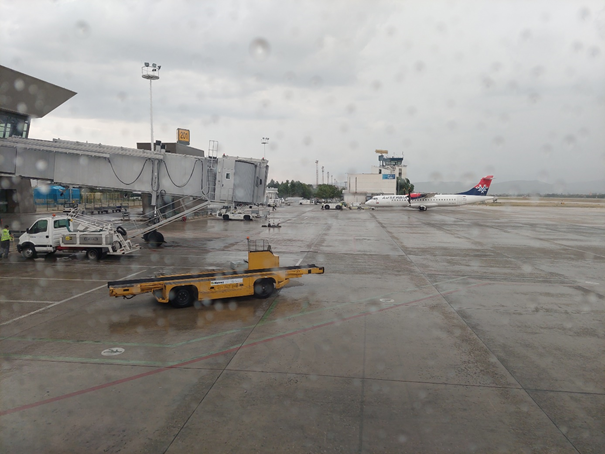
Flight statistics LF: 75 %Distance: 1135 kms (613 nm)Departure time (scheduled/actual): 14:25/14:40Arrival time (scheduled/actual): 16:30/16:31Flight duration (scheduled/actual): 2h 05 min/1 h 51 min Skopje. Inspiration for my maiden visit was an article about the Skopje 2014 Project, which was intended to re-shape the capital into a glorious and proud city and establish Skopje as a tourist destination. And I still remember my first impression after seeing the new center of Skopje, a mixture of surprise, disbelief, and astonishment. In intention of its authors, the Skopje 2014 project was intended to give more classicist appeal and transform the modernistic city into monumental and visually appealing place. Since its inception, the project was controversial and many people criticized the proposed new aesthetics. In contrast, its supporters claimed it would make Skopje more glamorous and put it on the tourist map, attracting many tourists. And I think they were right, as the new city center attracted me twice in 2017 and 2022. While the first visit was focused on exploring new developments of the Project 2014, this visit was focused on tracking the brutalist roots of the city. With little help of the book “Modernism in-between” which describes the phenomenon of post-war Yugoslav architecture, I walked approx. 70 km on foot in search of signs of Yugoslav modernism. To better understand, the soul of brutalist Skopje, I headed to the Skopje Fortress to admire the view from its ramparts. There are many iconic buildings across the river like the Main Post Office and Telecommunication centre which still represents its original shape. All except the building of the Telephone Exchange, which received a new façade in ancient Athens-like style. Similar to the Telephone Exchange, the North Macedonia Government building received a new-look in rather eclectic style.
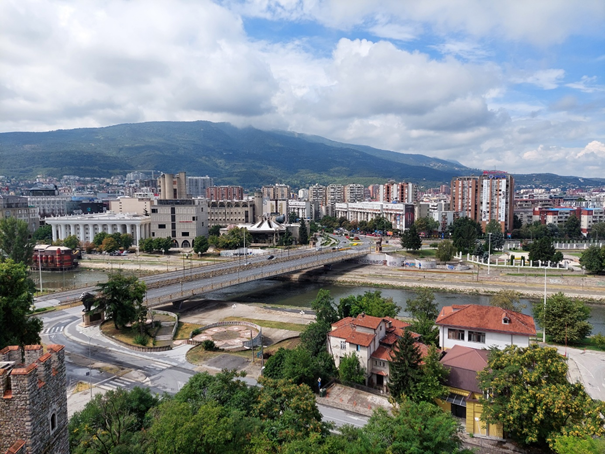
Leaving the Skopje Fortress, I take the Goce Delcev bridge, with both of its ends guarded by 4 lion statues. Then I view the residential blocks of different height. The next stop is the Nicola Karev High School. Then I head to the Skopje Train station - the innovative building, raised above the ground on columns, designed by Kenzo Tange and completed in 1981. In 2022 the station is a picture of misery and despair. Infested by pigeons, abandoned by people and not maintained for a long time. It seems to be left to decay and perhaps in long term to disintegrate. But there are still many brutalist buildings, which are in much better shape than the train station or were saved from being converted into ancient-Athens-like temples. One of them is the structure of the Museum of Contemporary Art designed by Polish architects Wacław Kłyszewski, Jerzy Mokrzyński and Eugeniusz Wierzbicki. The project of the museum was donated by the Polish government as a gift for Skopje, hit by the devastating earthquake of year 1963. Other examples are buildings of Ss. Cyril and Methodius University, the Macedonian Academy of Sciences and Arts, the Macedonia National Bank and National Bank of the Republic of Macedonia. And there is GTC Shopping Centre, whose cubic structure seems to be integrated with tall residential tower blocks. Plentiful restaurants which occupy the riverside section of the GCT was my destiny after intense sightseeing. And each evening I walked across the Vardar river passing the building of the Opera, one of the recently constructed bridges with zillions of sculptures, fake-boats “moored” at the river embankment and oversized new buildings, I was astonished by them. In my opinion, they are simply neither tasteful, nor respectful for the historical and architectural heritage of Skopje.
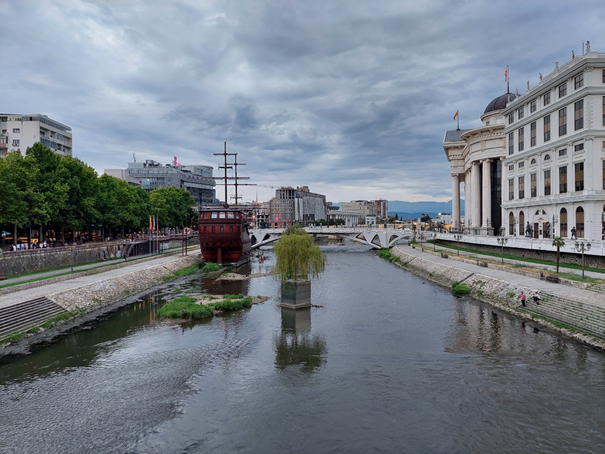
LO594: Skopje - Warsaw Several passengers are waiting for the 14:45 shuttle bus to Skopje airport at the bus stop in front of the Holiday Inn hotel. The bus arrives at 14:38 and, after all passengers board, departs on time. On its way, it stops at the Skopje train station, where several additional passengers get in, then drives to the next stop at the Capitol Mall, where it does not stop as no passengers wished to travel. Throughout the drive, I observe landscapes dominated by high-rise apartment blocks, where modern buildings coexist with Yugoslav ones. The idea of a large, self-sufficient residential area is well known to me as I grew up in a similar establishment in Poznań’s residential district called Rataje, which represents a typical urbanistic development known in many Eastern Bloc countries. Similar to residential areas in Skopje, such establishments are self-sufficient by offering residents various shops and other services, as well as nearby schools and healthcare facilities. The only difference is the shape of the residential blocks, which are of different height, have more decorative ornaments and are covered by a sloping roof, in contrast to the box-like shaped blocks dominating the landscape of Poznań’s Rataje. At 15:23, the bus arrives at the Skopje International airport, located 20km southwest of Skopje. Inside, after checking the display screens, I search for check-in desks 2,3,4, which have been allocated for check-in for today’s flight LO594. After document check, my bag is tagged to Warsaw, and I receive a boarding card. Then I leave the terminal building to take the picture below.
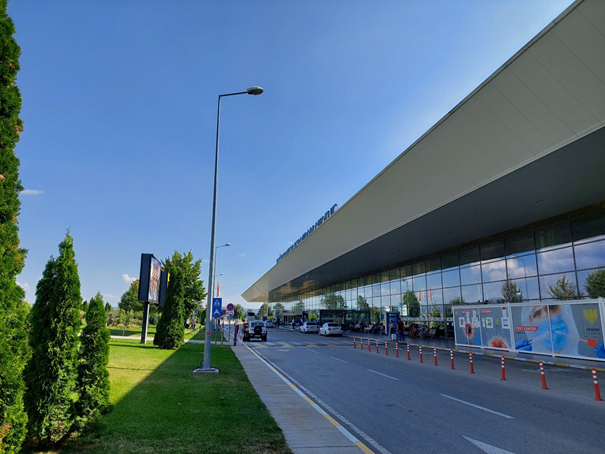
Upon return, I proceed upstairs for passport and security control, and at 15:51, I enter the airside area. According to information printed on my boarding card, the flight boarding should start at 17:00. Having over an hour to spare, I am enjoying a cup of cappuccino (175 MKD) in a nearby café, awaiting arrival of the flight from Warsaw. At 17:41, the flight LO593 operated by the 11.6-years-old aircraft E195 AR (registration SP-LNN), touches down at Skopje airport. The machine has already completed rotation from Warsaw to Oslo, and the flight to Skopje is its third segment for today.
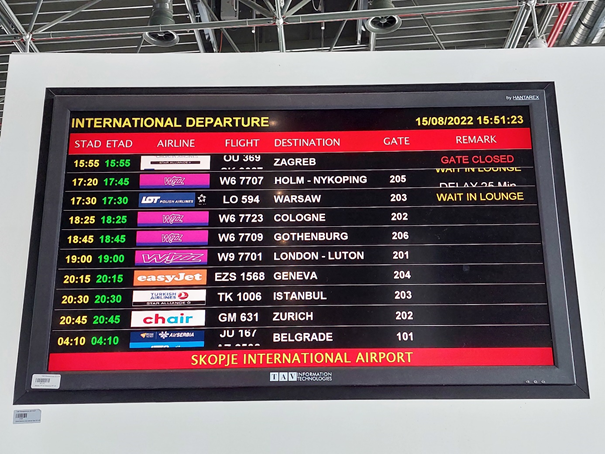
At 17:02, the doors at gate 203 are opened, but the boarding won’t start until 17:10. Passengers are already forming a line awaiting the commencement of boarding. Among the passengers, I spot both Macedonian nationals travelling to Warsaw and beyond, as well as Polish ones returning to Poland. Finally, after an 8-minute-long wait, the ground staff invite passengers to board the flight via an air bridge. The queue moves staidly and after scanning my boarding card, I proceed to the aircraft and take the assigned seat of 22D. As the flight is full, the seat next to me is occupied. Boarding is completed at 17:26 and, 9 minutes later, the cabin crew present safety instructions in Polish and English. At 17:38, push-back procedure starts, and after 10 minutes of taxing, we take off at 17:48.
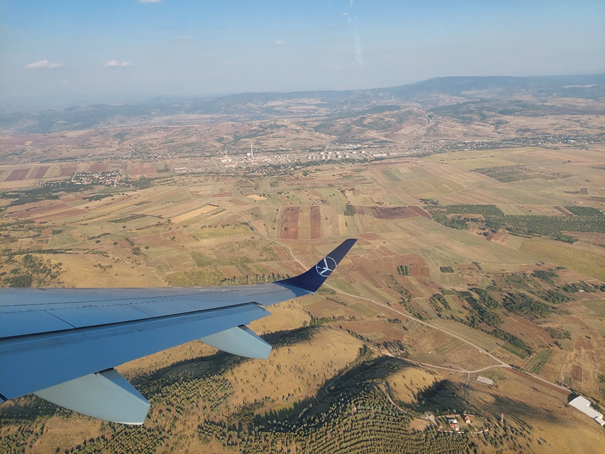
After reaching cruising altitude, the usual in-flight service commences. The reminder the flight I spend completing homework for my German lesson and check some articles in the in-flight magazine Kaleidoscope. In August 2022 issue, I read an article about Tirana, another about Krakow as a perfect spot for a city break and one about Olsztyn the capital of Polish Warmia, where, to my surprise, you can taste parsley ice cream offered by one of the ice cream parlours. Perhaps, I should take a train to Olsztyn to taste parsley ice cream.
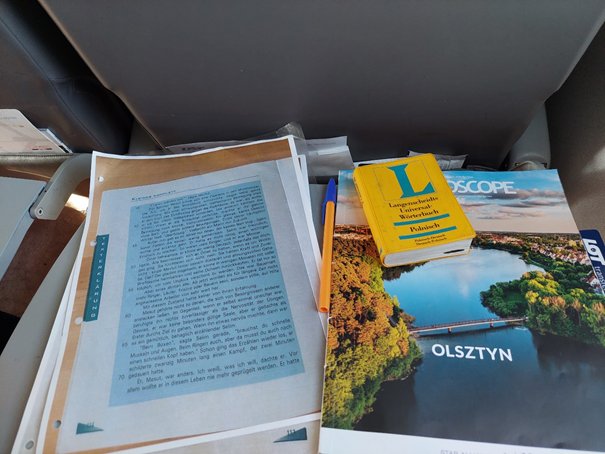
Today’s flight path crosses over Kumanovo, south of the Serbian city of Kragujevac, the Hungarian municipalities of Szeged and Szolnok, and over the Slovakian High Tatra Mountains, entering Polish airspace over the village of Kacwin. At 19:07, we pass the Polish city of Kielce when the cabin crew announces preparations for landing. The descent takes 20 minutes and at 19:27 the aircraft touches down on runway 29. After a 3-minute taxi, we park at stand 17, and then, after disembarking the plane via stairs, a bus takes us to the terminal building. I proceed to passport control and I reclaim my luggage, while the aircraft will complete its last 5th segment to Copenhagen. And now I'm back on Warsaw time.
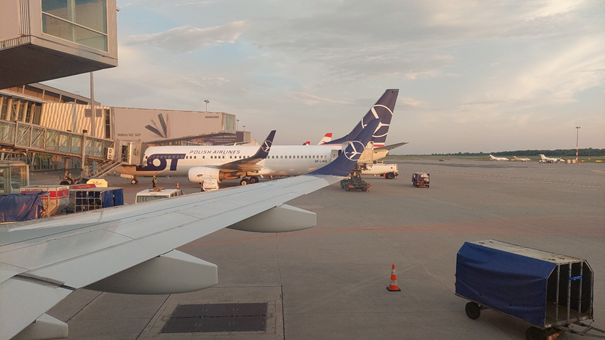
Flight statistics LF: 98 %Distance: 1135 kms (613 nm)Departure time (scheduled/actual): 17:30/17:48Arrival time (scheduled/actual): 19:35/19:27Flight duration (scheduled/actual): 2h 05 min/1 h 39 min Share your travel experience by submitting a trip report to [email protected] EX-YU Aviation NewsBy: EX-YU Aviationhttp://www.blogger.com/profile/[email protected]
Title: TRIP REPORT: LOT, Warsaw - Skopje - Warsaw
Sourced From: www.exyuaviation.com/feeds/5415454144128176869/comments/default
Published Date: Sun, 11 Sep 2022 07:59:00 +0000


